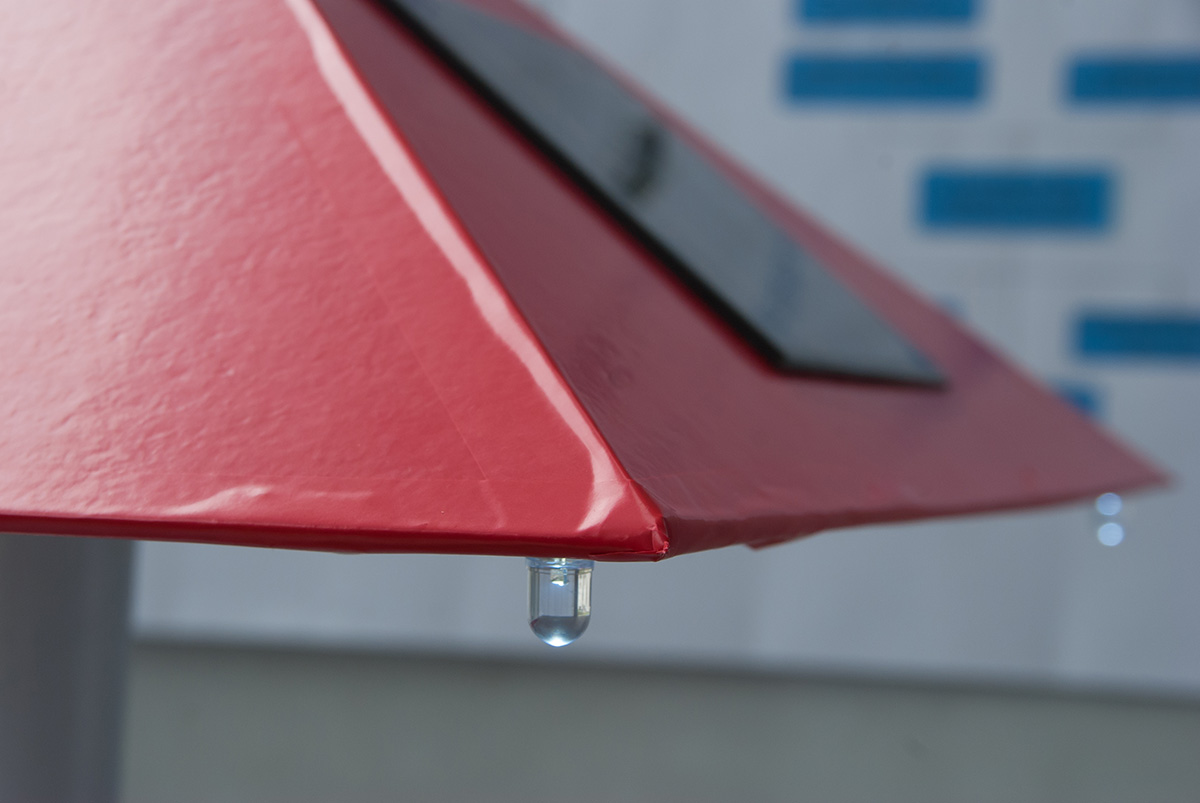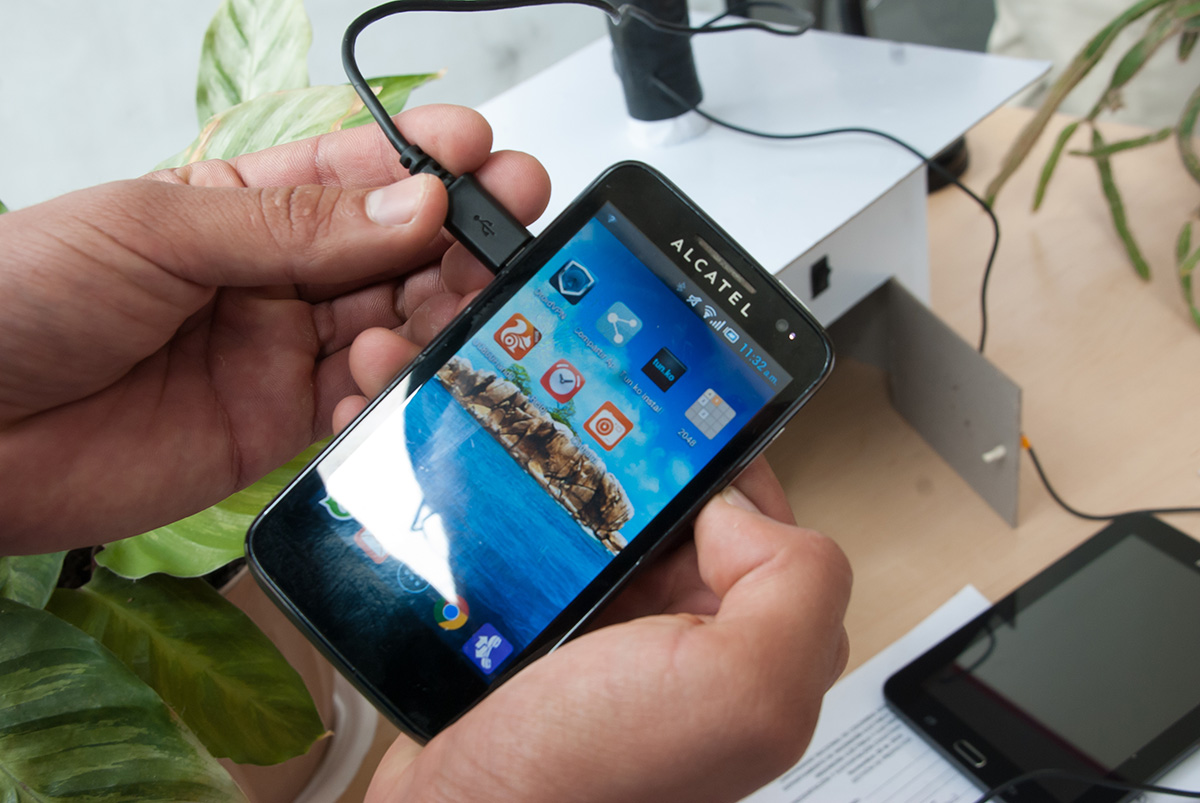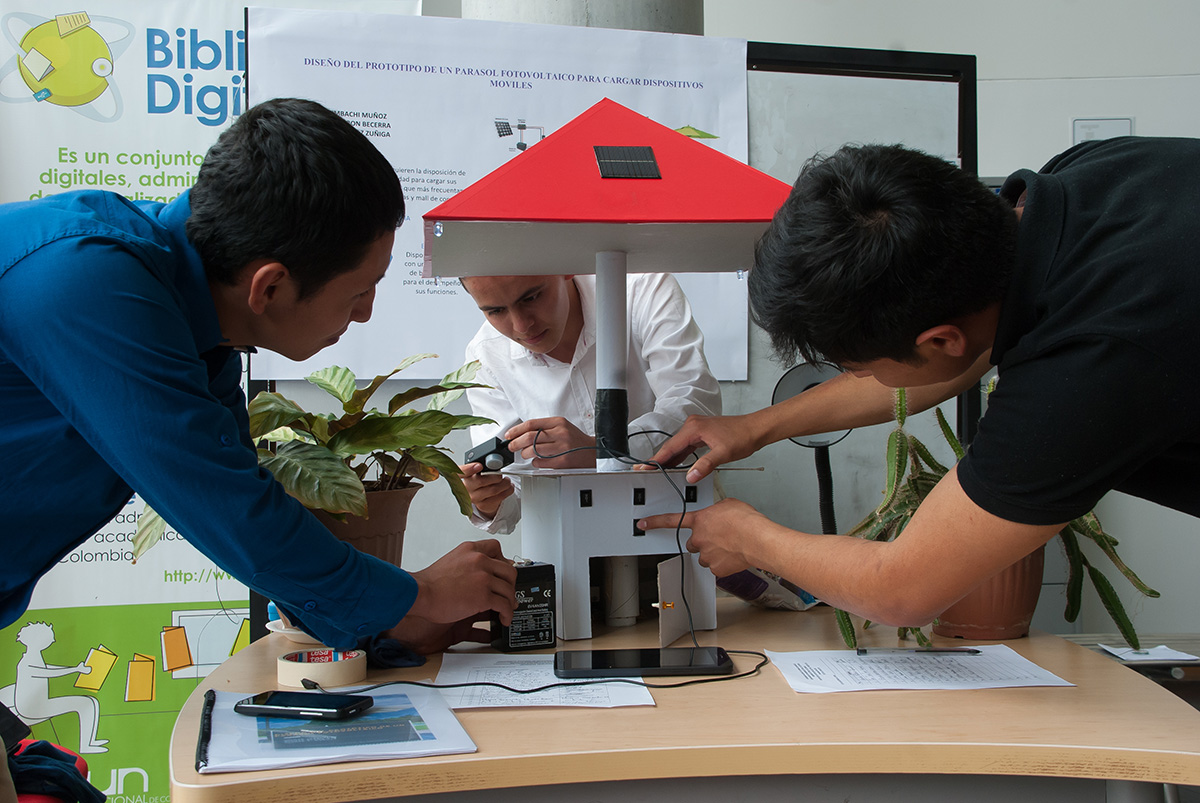The umbrella was functionally designed to scale by a group of Universidad Nacional de Colombia (UNal) in Manizales Electric and Electronics Engineering students Hellman Imbachi, Moisés Barón, and Reagan Muñoz.
The umbrella produces the necessary electric energy to charge a mobile phone, a camera or any similar device without excessive electric consumption.
The photovoltaic prototype has a series of solar panels which feed the circuit providing electric energy.
"We are referring to devices such as cell phones, and tablets, among others which require at least five volts to operate," said the students.
The scale prototype was built with cardboard, cables, LED lights, solar panels, batteries, and a regulator.
"The main idea behind the project was the need to identify access to energy sources to charge mobile devices in open spaces, as there are few of these devices in urban settings," said Imbachi.
Therefore they thought of the current initiatives on renewable energy production which use natural sources such as the wind, sun, rivers or oceans.
Functional model
"The energy captured by the solar panels passes to a load regulator and then to a battery bank. The system produces five volts of continuous current for use in electronic devices," added the students.
The cabling, as well as other accessories of the electric circuit, are hidden inside the hollow umbrella pole, including an electrical outlet (fixed or not) to plug the devices mentioned above.
"The larger the system, the greater the energy production; in other words, if there are more panels there could be more resources to supply more devices at the same time," said the designers.
They have not discarded the possibility of applying the model on the parasols located at the La Nubia campus, taking advantage of the solar radiation they receive.
Precisely at this campus, the first module or Green Point was installed to charge cell phones through a photovoltaic system which works with a system comprised of a solar panel capable of producing 100 volts maximum, a battery and an inverter.
The system designed and built by the E3P Group, ascribed to the Colombian Administrative Department of Science Technology and Innovation directed by Camilo Younes, was incepted in 2014.
 Correo Electrónico
Correo Electrónico
 DNINFOA - SIA
DNINFOA - SIA
 Bibliotecas
Bibliotecas
 Convocatorias
Convocatorias
 Identidad UNAL
Identidad UNAL







